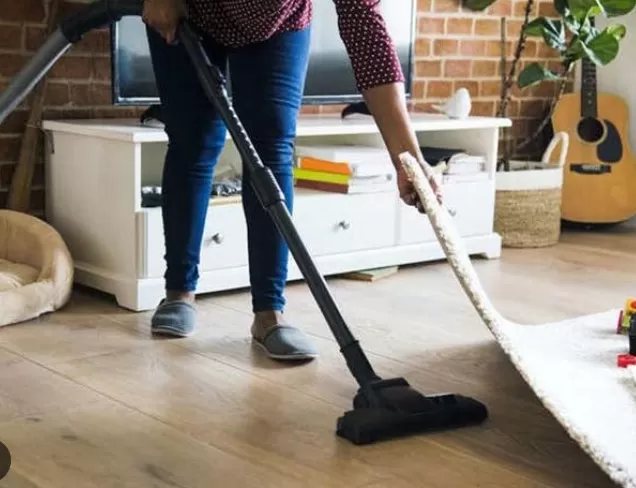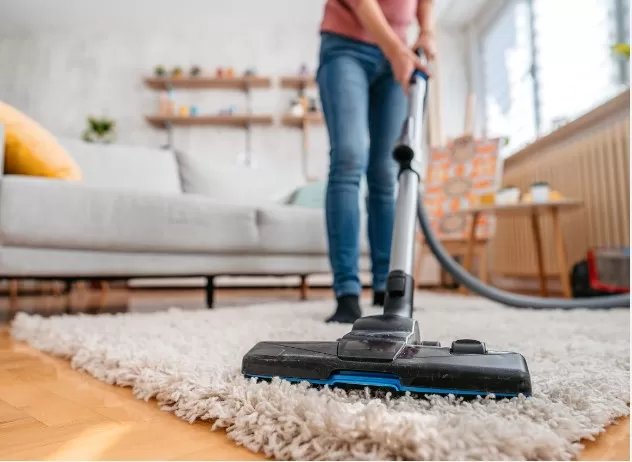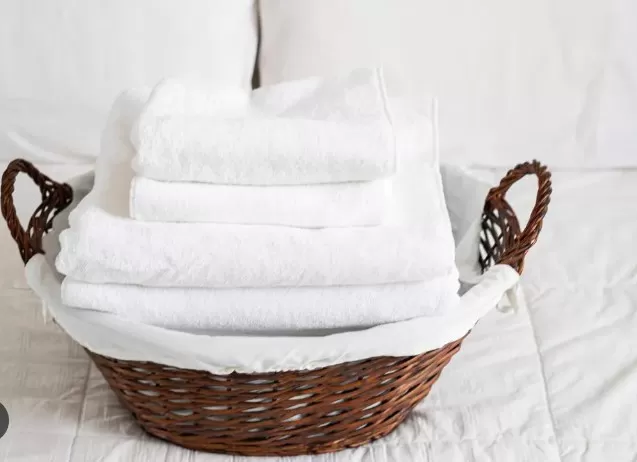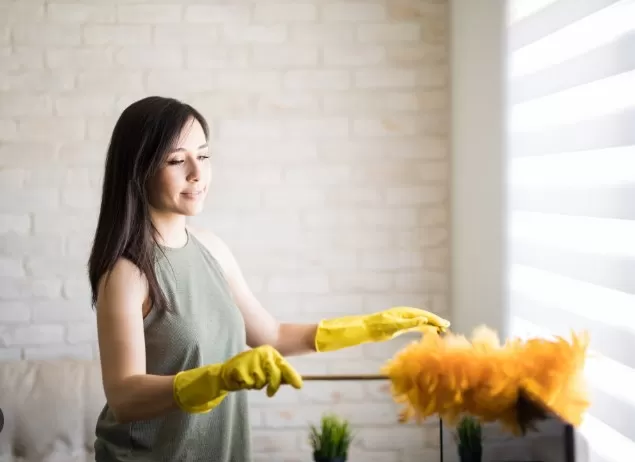Preventing Dust Buildup: Proactive Measures for a Clean Home. Dust is a common nuisance in every home, but there are ways to prevent it from forming in the first place. By implementing a few simple maintenance measures, you can minimize dust and enjoy a cleaner living environment
Keeping Dust Outside: Strategies to Minimize Dust Entry

Dust is often brought into our homes from the outside, both through natural means and our own activities.
By taking proactive steps to keep dust outside, we can significantly reduce its presence inside our homes. Alicia Sokolowski, president and co-CEO of Aspen Clean, highlights the importance of minimizing dust entry and offers helpful insights.
Seal windows and doors: Ensure that windows and doors are properly sealed to prevent dust from entering through cracks and gaps.
Use weatherstripping and caulk to seal any openings, creating a barrier against dust infiltration.
Use doormats and shoe removal: Place doormats at all entrances to trap dirt and dust from shoes.
Encourage family members and guests to remove their shoes upon entering to prevent dust from being tracked inside.
Regularly clean and maintain entryways: Keep entryways clean by sweeping or vacuuming regularly.
This helps remove any dust or debris that may have accumulated near the doorways and reduces the chances of it spreading further into the house.
Create an outdoor cleaning routine: Regularly clean outdoor spaces such as patios, decks, and porches to minimize the amount of dust brought indoors.
Sweep or hose down these areas to remove dust and dirt that can be easily tracked inside.
Manage landscaping: Keep landscaping features, such as gravel or mulch beds, away from entry points to minimize dust being kicked up by foot traffic or wind.
Consider using alternative materials that produce less dust, such as paved walkways or low-maintenance ground covers.
Doormats: A Simple Solution to Minimize Dust Entry
Placing doormats strategically at the entrance of your home can be an effective way to prevent dust from being tracked inside.
Alicia Sokolowski, president and co-CEO of Aspen Clean, suggests using doormats both outside and inside your front door to minimize dust infiltration. By following this simple practice and encouraging guests to remove their shoes, you can limit the amount of dust in your entrance hallway and throughout your home.
Use fiber doormats: Choose doormats made of durable, fiber-based materials, such as coir, sisal, or other natural fibers.
These materials have excellent dirt-trapping properties and can effectively capture dust and debris from shoes.
Place doormats strategically: Position a doormat outside your front door to catch larger particles and dirt before they enter your home.
Additionally, place a second doormat just inside the entrance to provide an extra barrier against dust. This arrangement helps ensure that shoes are thoroughly wiped before stepping onto your floors.
Encourage shoe removal: Ask family members and guests to remove their shoes upon entering your home.
This practice not only reduces the amount of dust tracked inside but also helps maintain cleaner and healthier indoor Air Quality.
Regularly clean and maintain doormats: To keep doormats effective at trapping dust, it’s important to clean them regularly.
Shake out or vacuum the doormats to remove accumulated dirt and debris. If necessary, you can also rinse them with water and mild detergent and allow them to dry thoroughly before putting them back in place.
Minimizing Dust Entry: The Importance of Keeping Windows Closed

Windows can serve as entry points for dust particles, especially if they face high-traffic areas or are faulty.
By being mindful of window usage and ensuring their proper functioning, you can significantly reduce dust accumulation inside your home. Insights from Alicia Sokolowski, president and co-CEO of Aspen Clean, and Vera Peterson, president of Molly Maid, offer valuable advice on keeping windows closed and addressing potential issues.
Limit window opening: While it’s refreshing to let in fresh air, excessive window opening can allow dust to enter your home.
Sokolowski advises keeping ground floor windows closed, particularly if they face a road. During peak traffic hours, the dust generated from passing vehicles can be significant.
Minimize window opening during these times to prevent dust infiltration.
Check for faulty windows and doors: Leaky windows and doors can also contribute to dust entry.
If you notice an increase in dust levels, it’s a good idea to inspect your windows and doors for any signs of gaps, cracks, or faulty seals. Properly functioning windows and doors create a barrier against dust and other outdoor elements.
Maintain and repair windows: Regular maintenance of windows is essential to ensure their optimal performance.
Clean windows regularly to remove dust and debris that may have accumulated on the surfaces. If you identify any issues with your windows, such as damaged seals or frames, consider scheduling repairs or seeking professional assistance to address them promptly.
Harness the Power of Plants: Using Houseplants to Filter Dust
While keeping windows closed is essential to minimize dust entry, it’s not always practical.
In such cases, incorporating houseplants near your windows can serve as a natural and effective way to filter dust particles from the air. Alicia Sokolowski, president and co-CEO of Aspen Clean, suggests selecting specific plants with hairy or crinkly leaves, as they have a higher capacity to trap and filter dust.
Choose the right houseplants: Select houseplants with textured leaves, such as those that are hairy or crinkly.
These types of leaves have more surface area to capture and retain dust particles. Plants like spider plants (Chlorophytum comosum), Boston ferns (Nephrolepis exaltata), and peace lilies (Spathiphyllum) are excellent choices known for their dust-filtering capabilities.
Place plants strategically: Position your chosen plants near windows that are frequently open.
Placing them directly in front of the open window allows them to catch airborne dust particles before they settle on surfaces in your home. Ensure the plants receive adequate light and ventilation to thrive.
Regularly care for your plants: To maintain their dust-filtering efficiency, care for your houseplants properly.
Regularly dust the leaves with a soft cloth or gently rinse them under lukewarm water to remove accumulated dust. This will ensure the plants continue to function as effective natural air purifiers.
Supplement with other air-purifying methods: While houseplants can help filter dust, they may not capture all particles.
Complement their efforts by using other air-purifying methods, such as high-quality air filters in HVAC systems, and employing proper cleaning practices like regular vacuuming and dusting.
Regular Air Filter Maintenance: Minimizing Dust Spread in Your Home

Maintaining clean and effective air filters is crucial for reducing the amount of dust in your home.
Alicia Sokolowski, president and co-CEO of Aspen Clean, emphasizes the importance of regularly changing air filters to minimize dust accumulation. Additionally, Melissa Poepping, founder of The Chemical Free Home, advises paying attention to visual cues and adjusting filter maintenance based on the size of your home and the season.
By staying proactive with air filter maintenance, you can prevent filters from spreading dust, dirt, and pollen instead of containing them.
Set a regular schedule: Establish a schedule for changing or cleaning your air filters.
As a general guideline, Sokolowski recommends replacing filters every three months. However, Poepping suggests considering the size of your home and the current season to determine the optimal frequency for your specific situation.
Regular Bedding Maintenance: Keeping Dust at Bay

Properly maintaining and cleaning your bedding is essential for minimizing dust accumulation in your home.
Melissa Poepping, founder of The Chemical Free Home, highlights the significance of bedding in collecting and spreading dust particles. By adopting a regular bedding cleaning routine, you can effectively stay ahead of dust from dead skin, pet dander, and hair shedding, creating a cleaner and healthier sleeping environment.
Wash bedding every two weeks: Poepping recommends washing your bedding, including sheets, covers, and pillowcases, every two weeks.
This regular washing schedule prevents the buildup of dust, dirt, and other allergens that accumulate over time. Be sure to follow the care instructions for your specific bedding materials.
Shake out and air out bedding: For items that are not frequently washed, such as comforters or decorative pillows, Poepping suggests periodically shaking them outside to remove dust particles.
This action helps dislodge any settled dust and freshens the bedding. Additionally, airing out these items outside can help eliminate odors and improve overall cleanliness.
Vacuum and protect your mattress: To further reduce dust in your sleeping environment, regularly vacuum your mattress using an upholstery attachment.
This will help Remove Dust Mites, dead skin cells, and other debris that can accumulate over time. Consider using mattress protectors or covers to shield your mattress from dust and spills.
*The information is for reference only.